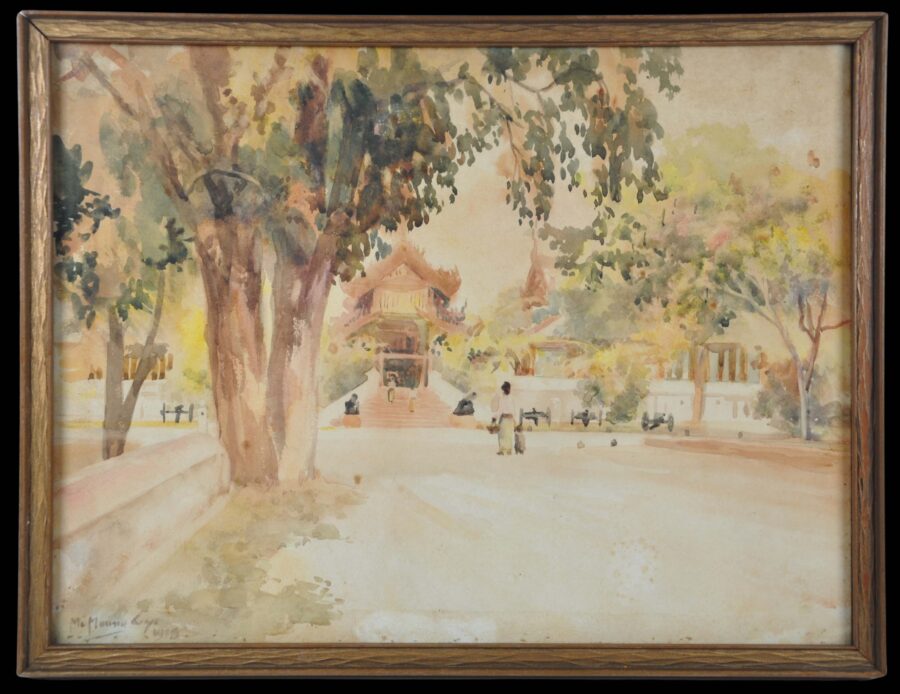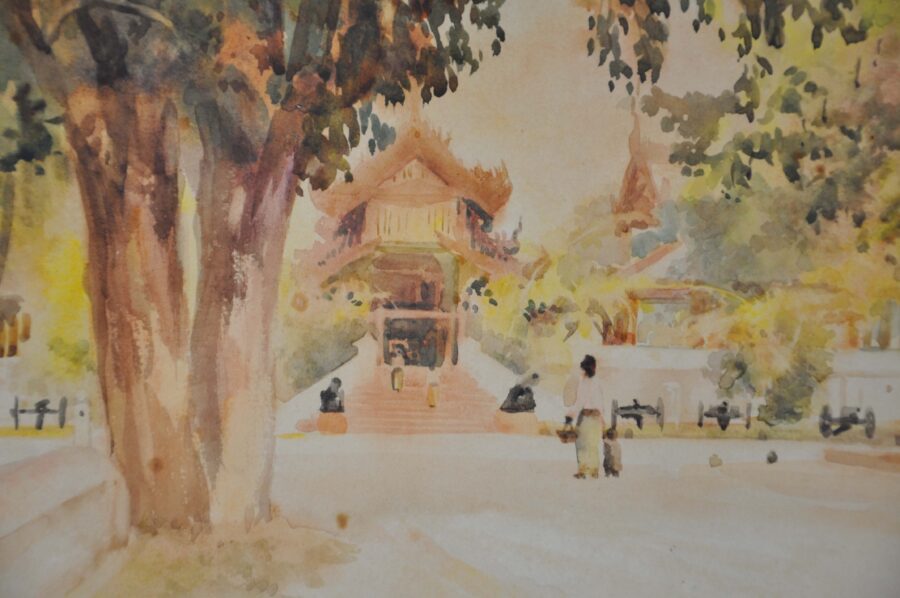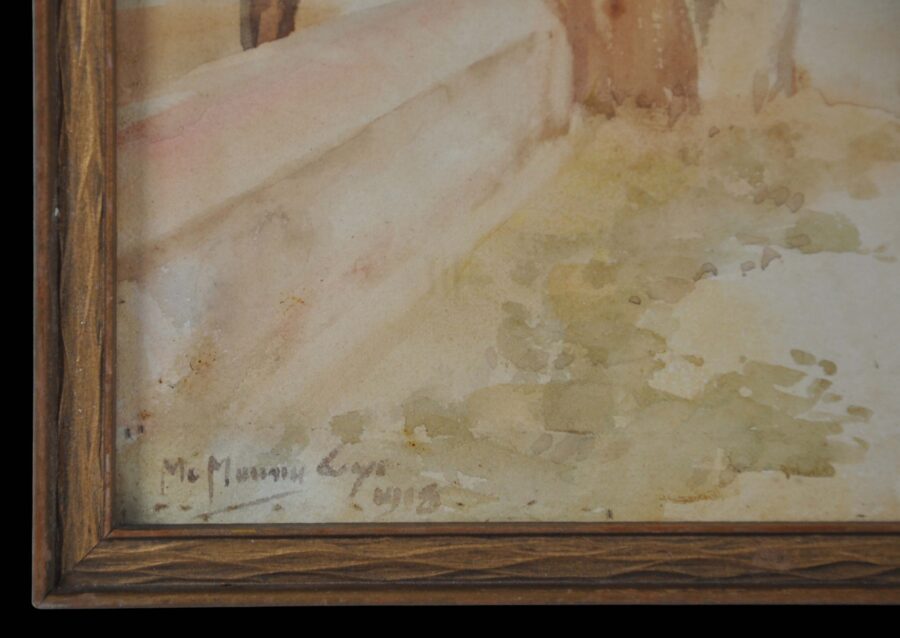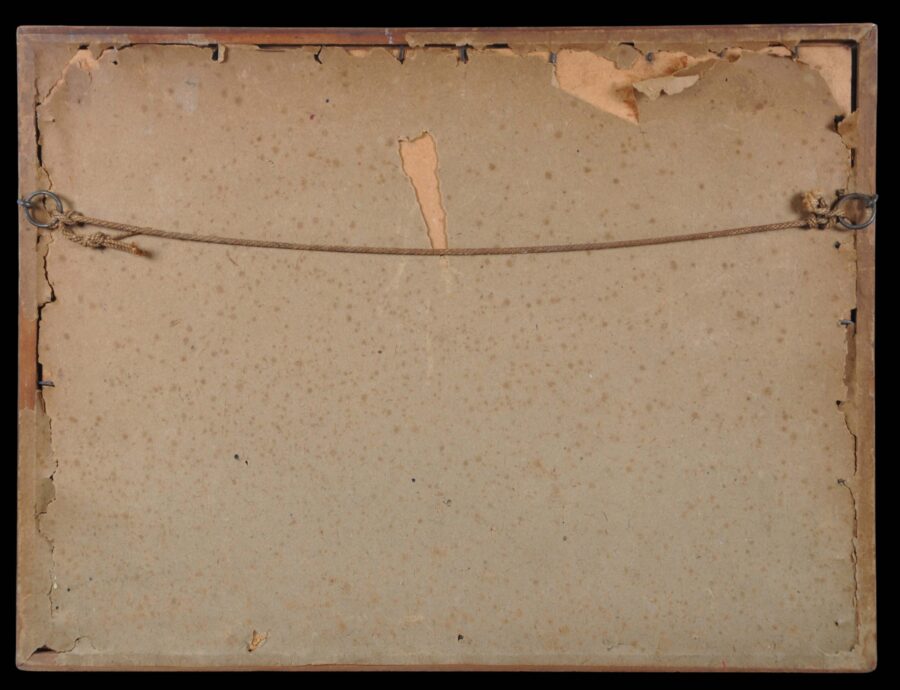Enquiry about object: 3324
Burmese Watercolour Painting ‘Temple Entrance’ by Maung Maung Gyi
Rangoon, Burma (Myanmar) dated 1918
dimensions of visible painting: 26 and 34.6cm, dimensions of frame: 28.7 and 37.3cm
Provenance
private collection, London, UK
This delightful watercolour by Maung Maung Gyi (1890-1942) of what seems to be an entrance to a temple or a monastery is an early example of Burmese painting in a more Western style.
It is signed in the lower left corner ‘M. Maung Gyi’ and dated ‘1918’.
Maung Maung Gyi was an early watercolour painter from Rangoon and the first Burmese to travel abroad for studies in Western painting, reaching England around 1906.
He became a well-known and controversial figure in Burma, partly because of his then daring visit to England, which he did without any wealth or scholarship behind him, and partly because of his anti-colonial views, notwithstanding his great admiration for Western painting styles. In 1938, when riots broke out between local Burmese and Indians in Mandalay, he surreptitiously accessed the court proceedings of the alleged Burmese provocateurs so that he might later draw their portraits and these drawings were then sent to newspapers across Burma which published them, helping to fuel rioting across Burma more widely. Andrew Ranard in his major book on Burmese paintings terms Maung Maung Gyi ‘the angry rebel’.
In 1939, he was made an instructor at the colonial State School of Art and Music.
Maung Maung Gyi built a large collection of his own works and those of other Burmese artists. However, his house burned down during the Second World War and the collection was destroyed. Partly as a consequence relatively few works by Maung Maung Gyi have survived. Four are known in the Pitt Rivers Museum, Oxford, UK. Says Ranard (2009, p. 64) argues that Maung Maung Gyi’s works represent early examples of Burmese expressionism with his angry personality coming out in the wild colours and brushstrokes in his paintings. Ranard also considers him a Burmese pioneer in plein air painting.
The painting here is in fine condition.
References
Ranard, A., Burmese Painting: A Linear and Lateral History, Silkworm Books, 2009.





